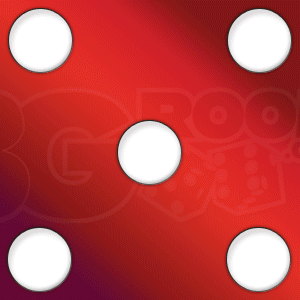Running and Trapping Tactics in Backgammon
There are numerous strategies in Backgammon, and which is the best depends entirely on the player, his style, and the way the game is being played.
For new players however, it is important to become familiar with running and trapping Backgammon tactics, as they are so vital.
While there is no consensus as to how it is best to open the game, very often, rookies and even veteran players use high number dice rolls to extricate their Backgammon checkers, and later on focus on trying to hinder or trap their opponent's pieces.
When it comes to stopping the opponent, there are usually two Backgammon tactics used. The first is to build a prime, which consists of a series of checkers (the ideal number is six) side by side, the objective being to trap the opposing checkers. The other strategy is to place a checker on the opposing home board, called an anchor. Having anchors becomes an effective tool in stopping an opposing checker from moving on.
This Backgammon strategy, while with its virtues, also has drawbacks, the main one being that it is quite predictable. Your opponent knows exactly what you are trying to do and will use his own rolls to try and stymie your movement.
One way of going around this is to use the running game early on. If you get high number rolls like 65 or 64, this will allow you to move your checkers rapidly, even as your opponent is trying to fortify his defenses and trap your pieces. However, employing the running game exposes your checkers a bit, so timing and distribution are important factors to consider.
Another Backgammon tactic that you can use is to entrap your opponent first. This approach has several advantages, the most crucial being the surprise element. Because your opponent expects you to escape, his strategy will be disrupted. Once you have trapped or hit his checkers, it will give you the time and space you need to bear off your pieces.
However, as with all Backgammon strategies, this one has risks too. The first is that as you bear off your checkers, the opposing pieces that you have not trapped will have a chance to hit you. Another important point to consider is that there is no guarantee that you will be able to trap a blot in your prime.
Often, a checker or two is trapped, but sometimes it does happen that a prime is built and, thanks to the dice roll, the opposing checker will just move around it. If that happens, not only will you have wasted a lot of rolls; you might end up being subject to a prime too.
Part of winning in Backgammon also includes reading your opponents. If he is too timid, then attack with a blitz. Putting a couple of his checkers on the bar will be enough to put his game off track. If he is very aggressive, use anchors to derail his movement.
As important as dice rolls are in running and trapping your opponents, it is even more crucial to have the correct Backgammon tactics. Working on these elements will turn you into a winning player.

